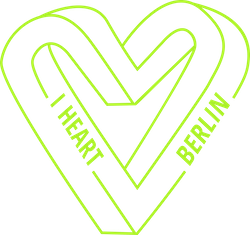We love Berlin for its multicultural feeling and the endless freedom – everyone can be and look just as they like to. But not only the people, who live in Berlin make up an interesting mix. The Berlin architecture has its own language and tells a lot about Berlin’s past, history, and constant change. Yes, there is still a wild clash of different architectural styles, which attract lots of visitors. But there are also a lot of buildings that have become victims of the passing time and inevitable changes.
Some left quietly without anyone hardly noticing and others left with lots of protests and a loud bang. Either way, the second world war, the cold war, and the GDR left their marks on our beautiful skyline and within the different areas of Berlin. Inspired by the book “Abgerissen!” by Arnt Cobbers we want to take a look back at some of Berlin’s architecture that we lost along the way…
Let’s start with some buildings that we lost to the second world war:
Lehrter Bahnhof
In place of the new Berlin Hauptbahnhof there used to be the Lehrter Bahnhof that got heavily destroyed in World War II – the ruin was demolished in 1958.
Lehrter Bahnhof, 1879 by Hermann Rückwardt
Lehrter Bahnhof, 1955, Bundesarchiv
Elefantenhaus, Zoologischer Garten
The elephants in the Berlin Zoo used to live in this beautiful building till it was bombed in World War II.
Elefantenhaus Zoo, 1875
Schloss Monbijou
This beautiful castle didn’t survive the war and had to go completly in 1959 – today you find the Monbijou park here instead.
Jaron Verlag / Landesarchiv Berlin
Synagoge Fasanenstraße
This beautiful Synagoge was burned down, bombed and finally vanished in 1958.
„Berlin, Charlottenburg, Synagoge in der Fasanenstraße”, by Waldemar Titzenthaler
Berliner Stadtschloss
The Berlin castle was badly destroyed in the second world war and later demolished, but currently it is being rebuilt as the Humboldtforum.
Now the victims of the cold war:
Versöhnungskirche
This church was situated inside the border strip between East- and West-Berlin, the GDR ordered its destruction in 1985.
Jaron Verlag / Günter Schneider
Sportpalast
This famous event space in Schöneberg, where Goebbels held his ‘Total War’ speech was demolished in 1973.
„Berliner Sportpalast 1955“ by Harald-Reportagen
And finally the victims of the reunification:
Ahornblatt
This famous restaurant did not survive the year 2000 even though it was a listed and protected building.
„2000-08-06 Ahornblatt“ by Axel Mauruszat
St. Johannes Capistran
Probably one of the most interesting-looking churches, located in Tempelhof-Schöneberg was demolished in 2005.
„St. Johannes Capistran (Tempelhof) Seitenansicht“ by Bodo Kubrak
Centrum-Wahrenhaus, Kaufhof
The Kaufhof still exists, but the iconic old facade has vanished. The building has also been expanded to the side of the fountain and its look has been fitted to the neighboring building the Berolinahaus.
photo: Silke Sohler
Palasthotel
The Hotel of the Palast der Republik was closed in 1992 and had to go in 2001.
„Unter den Linden and Palas Hotel, East Berlin, DDR 1985 Summer“ by Akitoshi Iio
Palast der Republik
One of the most famous vanished buildings is the GDR’s seat of parliament, the Palast der Republik, built in 1973 right where the Stadtschloss used to be. Due to asbestos contamination the palace was empty for a long time. This iconic building could not be saved, even though the asbestos was removed by 2003 and the majority of the inhabitants fought for it. The palace was demolished step by step between 2006 and 2008 – right now the Berlin Stadtschloss is being rebuilt in its place.
„Palast der Republik DDR 1977“ by Istvan
„Berlin Palast der Republik 2005“ by Andreas Praefcke
„Berlin Palast Dez2008“ von Jotquadrat
For more interesting vanished architecture in Berlin check out the book Abgerissen! Verschwundene Bauwerke in Berlin by Arnt Cobbers.
















